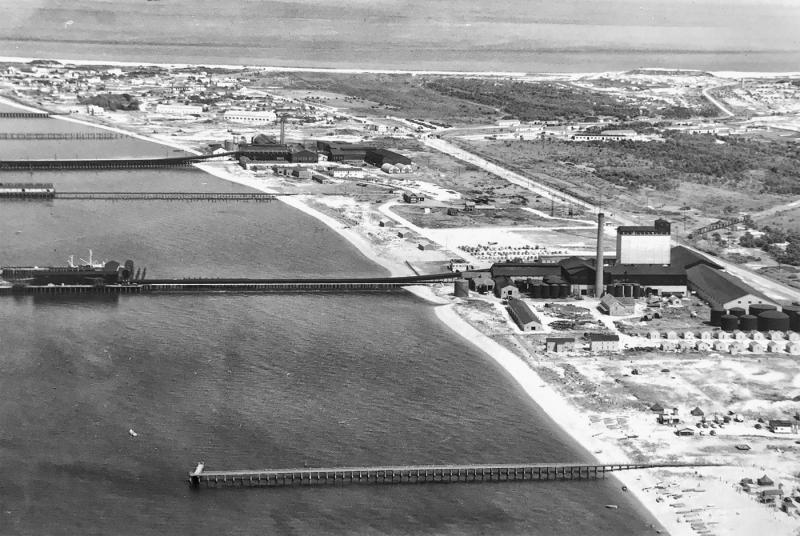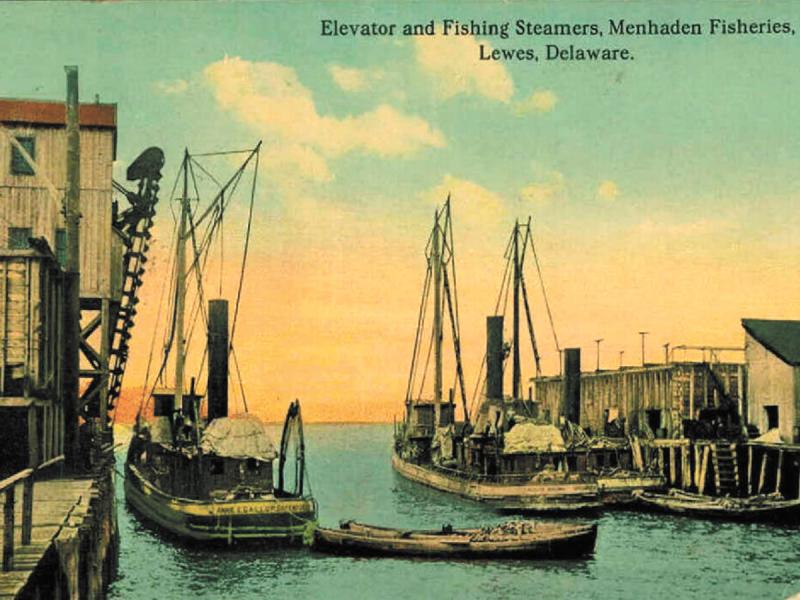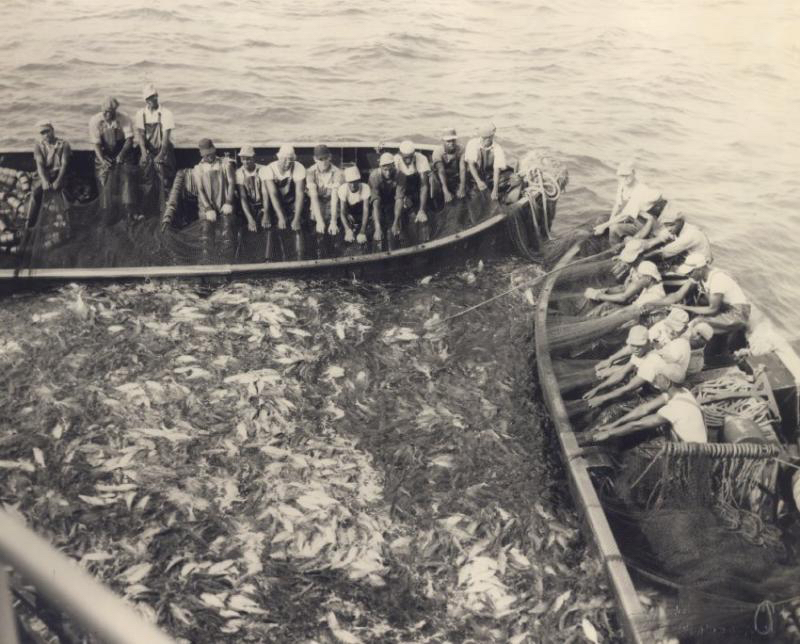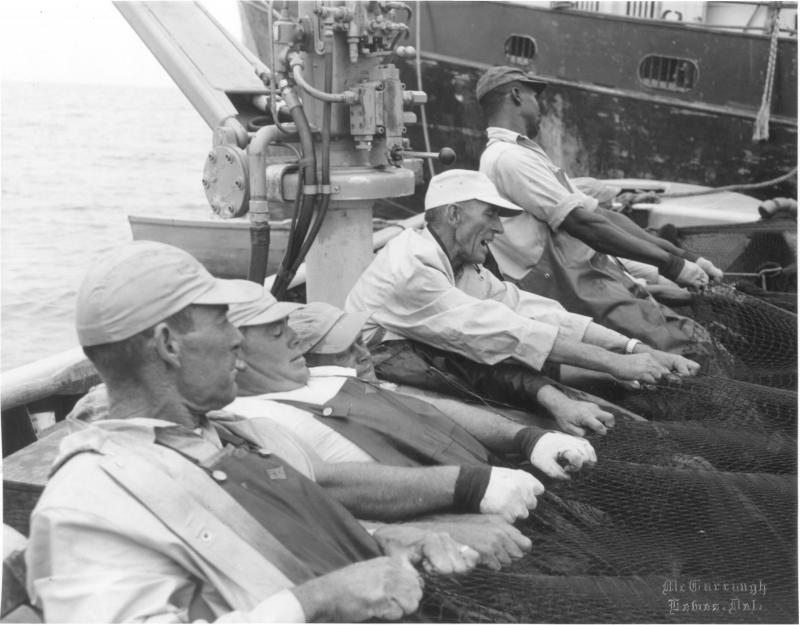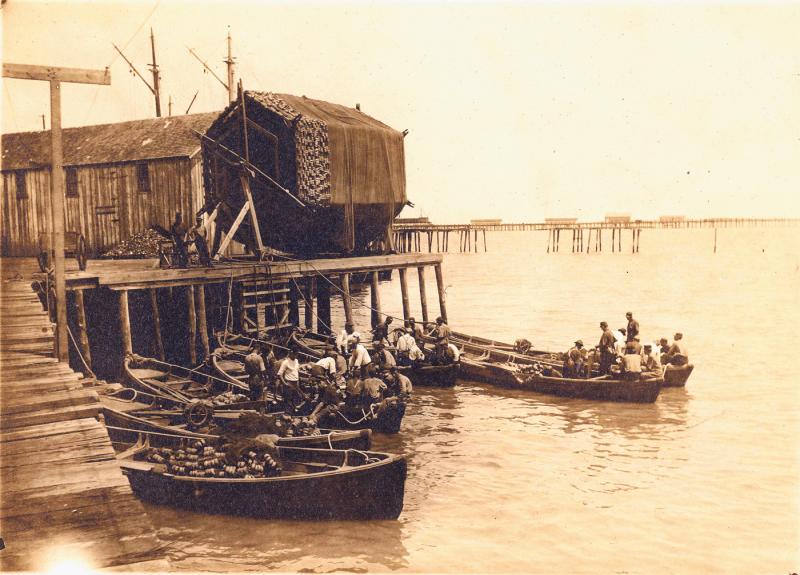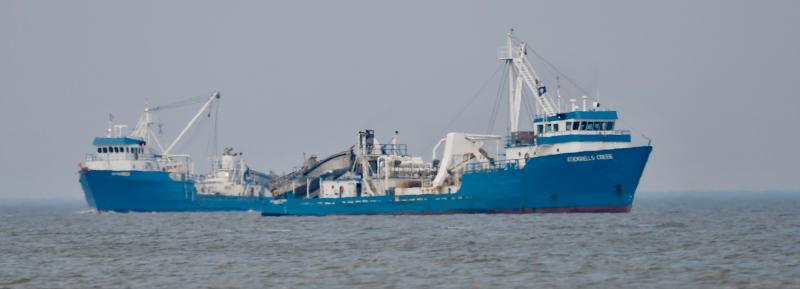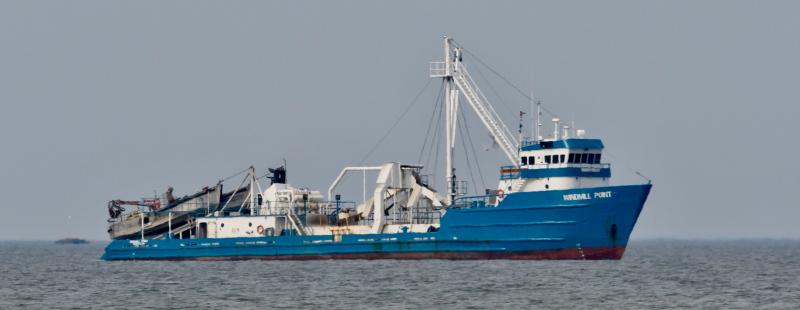Menhaden fleet provides flashback in Lewes history
The sight of a menhaden fishing fleet from Omega Protein in Reedville, Va., on Sept. 19 in the Delaware Bay off Lewes Beach provided a flashback into the history of Lewes when the menhaden fishing industry dominated the area economy.
Although the industry has roots as far back as the late 19th century in Lewes, it was Otis Smith, who was also elected mayor, who revolutionized the industry during the first half of the 20th century up until the mid-1960s when the fishery was depleted.
It's hard to believe today, but in 1953, Lewes was the largest seafood port in the United States, processing more than 390 million pounds of fish, of which 360 million pounds was menhaden.
Lewes was a factory town. There was no discrimination in the industry as good-paying jobs were provided for whites and Blacks. Many seasonal workers, mostly from Virginia and North Carolina, also came to Lewes to work during the fishing season from April through October.
At its zenith, the Lewes operation landed more pounds of fish than any other fishery in the United States.
The oily menhaden, not a good fish to eat, is a vital source of omega-3 fatty acids. It was processed into fertilizer and vitamins, and used for bait. It's also today used in livestock feed and added to pet foods and cosmetics.
There were benefits, but there were also drawbacks. Lifelong Lewes residents tell stories of large fish kills washing up on the beach, and there was always the smell of the factories. Residents planned their beach outings based on the wind's direction.
Although the six-ship fleet spotted along Lewes Beach uses modern technology and state-of-the-art fishing equipment, the basics are the same as used decades ago – spotting planes to find the schools of fish and large nets to reel them in. Today, mechanism has replaced the hard labor provided by hundreds of crew members who set the nets and then hauled them in.
The factories were torn down to make way for beach-front housing, and now there is very little evidence of that time in Lewes' history. Except for one artifact, photographs and a few historical markers and signs provide the only connection to the menhaden fishing industry.
That one artifact is a restored net reel on the Lewes Historical Society campus in downtown Lewes. Unfortunately, the current location of the net reel has riled some neighbors and stirred up a controversy over the past three years that is still not fully resolved.
The reel was usually turned by African American watermen, who stood inside the net reel and sang chanteys, while walking to rotate the structure. This allowed the nets to air dry in preparation for the next day.
The Native Americans were first to realize the importance of the fish as fertilizer. The menhaden fishing industry was born to provide a substitute for whale oil in the 1880s. By 1938, the Consolidated Fisheries Company of Lewes was the largest processing plant in the United States, with menhaden providing ingredients contained in fertilizer, vitamins and even makeup.
The industry thrived and grew, and by the early 1950s, the largest seafood port in the country had a fleet of 25 ships. More than 650 men worked in the three plants located along Cape Henlopen Drive where Cape Shores is now. And that doesn't include the hundreds of crew members on the ships. In 1950, more than half of the male population of the town worked in the industry.
About menhaden
The menhaden fish, which is usually about 12 inches long, swims near the surface of the oceans and bays, in large schools of up to 200,000. The seines used to catch these groups measured 1,200 feet long by 80 feet wide. Two small boats would position themselves around the school and drop a weight, trapping thousands of fish within the net. Today, machinery and large factory ships do all the work.
The Omega Protein port in Virginia is second only to Dutch Harbor, Alaska (of “Deadliest Catch” fame) in the annual quantity of fish brought to port. The company is the country's leading producer of omega-3 fish oil, fish meal, and organic feed for livestock and aquaculture feed manufacturers.
But, there are those sounding alarms as to the fate of the menhaden, which is a vital link in the maritime food chain as a crucial part of the diet of many other fish and wildlife including eagles, herons, egrets and osprey, and whales, sharks, dolphins and many other species.
According to the New Jersey-based Save Coastal Wildlife, the menhaden population along the southern Atlantic coast has declined 90 percent over the past three decades. It has shown signs of rebounding, but not enough to sustain a viable maritime food chain, according to the Atlantic States Marine Fisheries Commission.
Save Coastal Wildlife and other environmental groups are calling for stricter regulations for the menhaden fishing industry.
